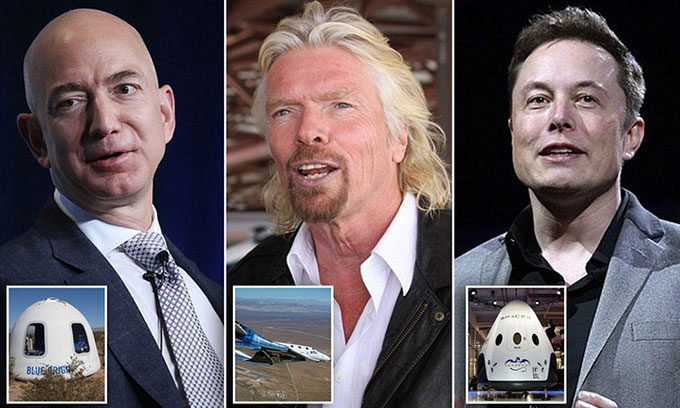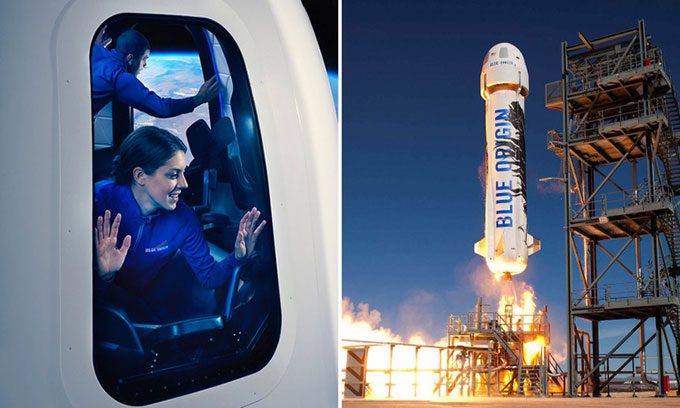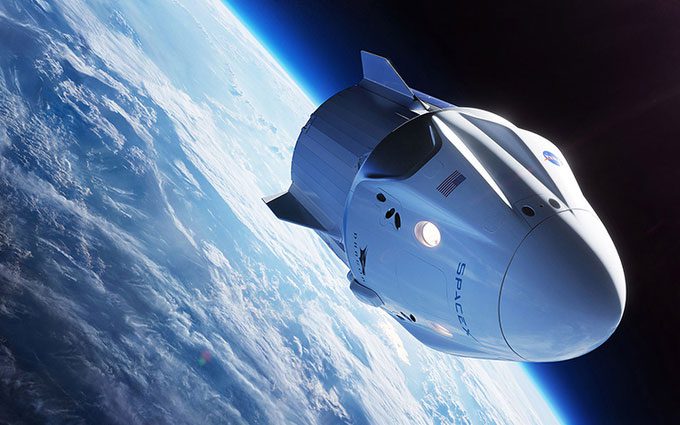To travel into space, tourists not only need to spend a lot of money but also must meet certain physical requirements.
Jeff Bezos’s Blue Origin and Richard Branson’s Virgin Galactic have come very close to providing commercial space tourism services, allowing tourists to experience weightlessness and view Earth from space.

CEO Jeff Bezos (Blue Origin), Richard Branson (Virgin Galactic), and Elon Musk (SpaceX). (Photo: Mail).
Blue Origin uses the New Shepard rocket, which takes off vertically to carry a capsule with six passengers beyond the Karman line, which is 100 km above sea level, marking the recognized boundary between the atmosphere and outer space, and then lands back on Earth using parachutes.
Meanwhile, Virgin Galactic employs the massive VMS Eve carrier aircraft, which takes off from a horizontal runway, carrying a spacecraft named VSS Unity SpaceShipTwo that also accommodates six passengers. Upon reaching an ideal altitude (about 15 km), VSS Unity SpaceShipTwo will separate from the mothership and activate its rocket engine to continue ascending to near-orbital heights, approximately 80 km above sea level.
In both cases, passengers have only a few brief minutes to unbuckle their seatbelts and freely gaze at Earth through the cabin windows.
When will space tourism services be ready?
The VSS Unity SpaceShipTwo carrying people to the edge of space. (Video: Virgin Galactic/NBC News).
Virgin Galactic successfully completed its first crewed test flight on July 11 and stated that regular commercial service would be ready by 2022, following two more test flights this year. Their waiting list is long, with over 600 tickets booked so far.
Once fully operational, the company plans to conduct up to 400 flights annually. Two seats on one of the initial flights will be raffled, with registration open until September 1.
As for Blue Origin, their first crewed test flight is also set to launch soon. However, a detailed schedule for commercial service has yet to be announced.
“We are planning two more test flights this year, followed by aiming for many more flights in 2022,” a spokesperson for Blue Origin told AFP.
How much do tickets cost?
The first tickets sold by Virgin Galactic will range from $200,000 to $250,000 each. However, the company notes that costs may increase in the future.

Blue Origin’s launch rocket and spacecraft system. (Photo: Blue Origin).
Blue Origin has not announced ticket prices, but to compete with Virgin Galactic, it will certainly be significantly lower than the $28 million that an anonymous bidder paid in an auction for a seat on the company’s first crewed flight.
Those with a tighter budget may consider spending $125,000 for a seat on Space Neptune, a cabin with 360-degree windows lifted to the atmosphere by a massive balloon the size of a football stadium. However, this flight only reaches an altitude of about 30 km, much lower than the edge of space and insufficient for tourists to experience weightlessness.
Are the physical requirements difficult?
No! You just need to be reasonably fit and healthy, and complete the training provided by the companies. While Virgin Galactic requires a 5-day training course, Blue Origin states that it will teach you everything you need to know just one day before the flight.
Both companies require passengers to be able to climb seven flights of stairs, equivalent to the height of the launch tower, in under 90 seconds. Additionally, they need to have a height between 152 cm and 193 cm and a weight between 50 kg and 100 kg.
What about SpaceX?
Elon Musk’s company is also getting into the space tourism game, but their plans involve much further journeys. The costs are also expected to be very high, reaching tens of millions of dollars.
In September of this year, American billionaire Jared Isaacman will charter a mission named Inspiration4 to take him and three other passengers into orbit around Earth using SpaceX’s Falcon 9 rocket and Crew Dragon spacecraft.

SpaceX’s Crew Dragon launched by Falcon 9 rocket. (Photo: Space).
Then, in January 2022, three entrepreneurs will go to the International Space Station (ISS) along with an experienced astronaut. The mission, named Ax-1, is being organized by Axiom Space, which has booked three other flights in the future with SpaceX.
Elon Musk’s company is also planning an orbital flight for four people through the intermediary company Space Adventures, along with another flight for Japanese billionaire Yusaku Maezawa to the ISS in December on a Russian Soyuz rocket.
Maezawa is also expected to embark on a trip around the Moon in 2023, this time on the Starship rocket currently being developed by SpaceX. He will invite eight members of the public to join, but the application deadline has already passed.





















































